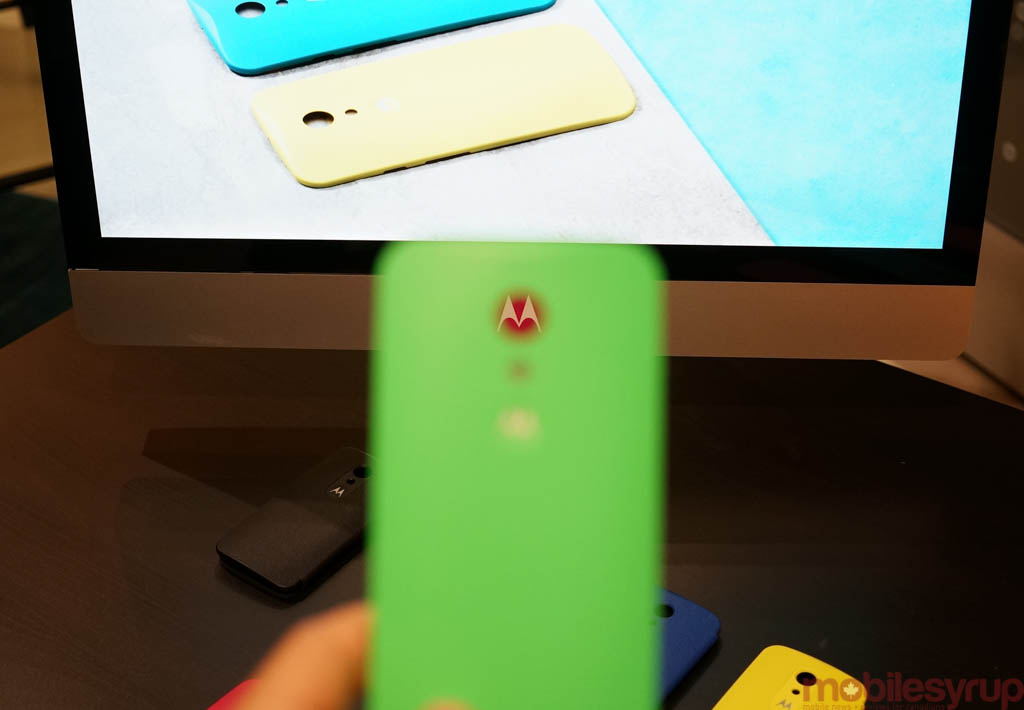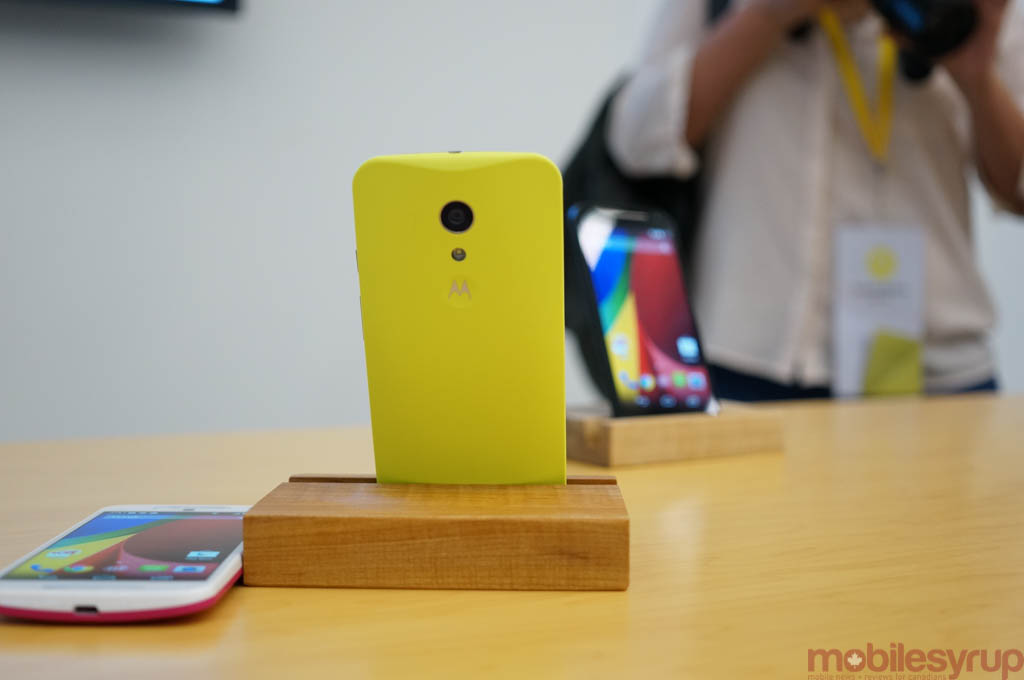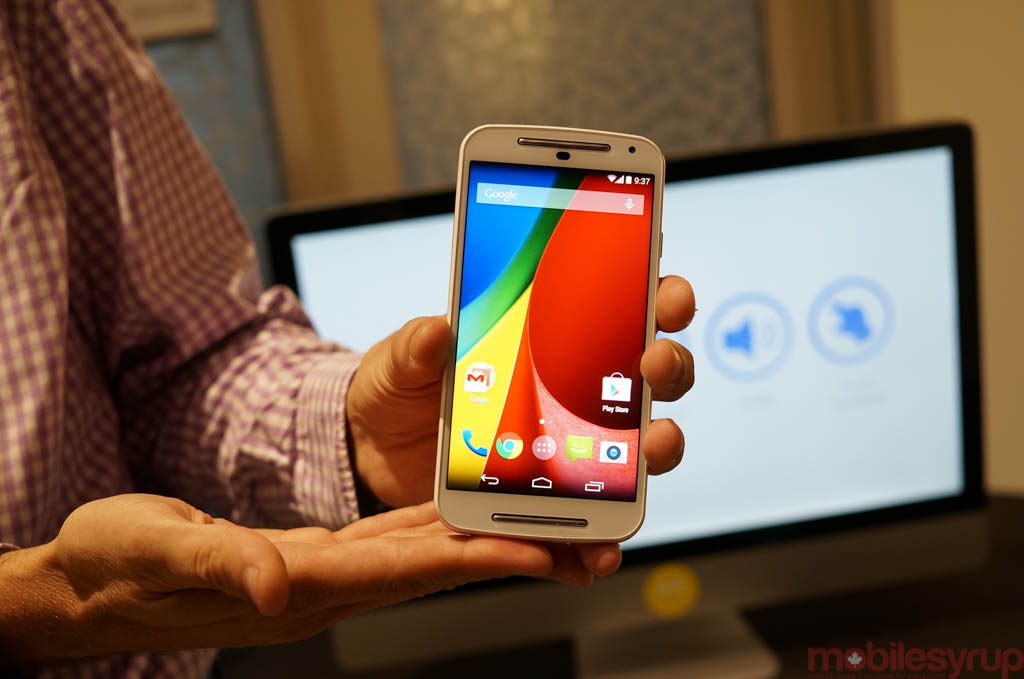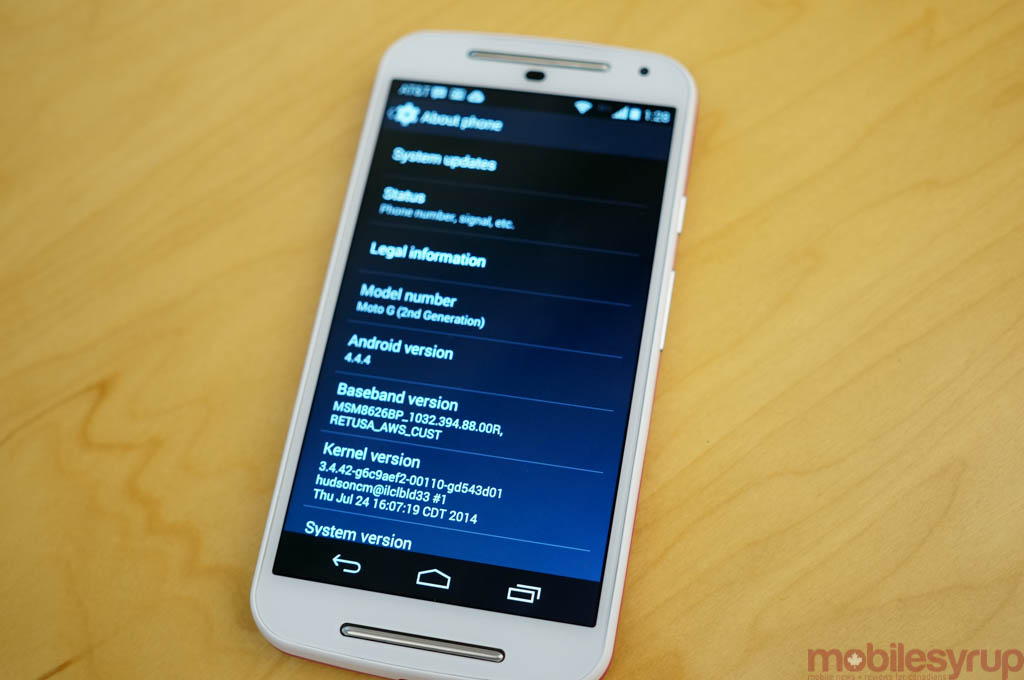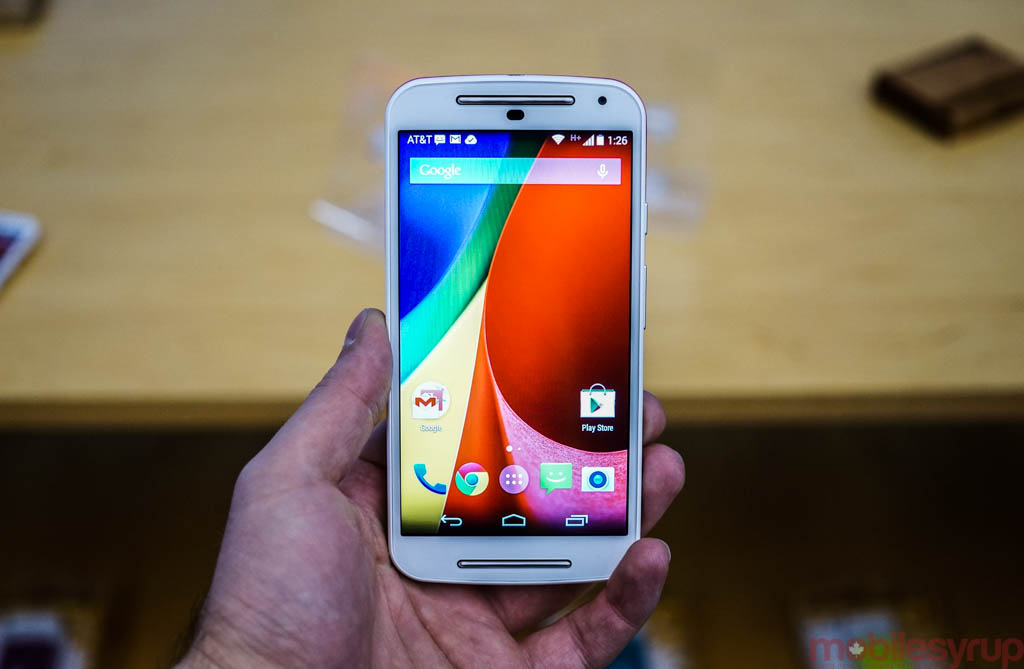
Motorola’s updated Moto G is less flashy than its Moto X counterpart, but that’s on purpose: the product’s tagline is “An exceptional phone at an exceptional price.”
With price front and centre, Motorola’s goal for the second generation Moto G was to broaden its appeal without raising buy-in. And that has been achieved: a larger display, improved audio quality, superior camera and subtle software improvements that don’t overshadow what makes stock Android so great.
While the device’s core specs remain unchanged — a 1.4Ghz quad-core Snapdragon 400 SoC, 1GB of RAM, 8GB of expandable internal storage and a non-removable 2,070mAh battery — the screen has been bumped to 5-inches, and though there is a small reduction to pixel density, users will immediately notice a higher fidelity IPS panel over the previous Moto G.
In fact, this generation Moto G may have a better panel than even the first Moto X — different technologies aside — likely due to the fact that Motorola was able to anticipate higher order numbers for the sequel, lowering per-component costs. The IPS screen is vibrant and bright, and the gap between glass and panel has been all but eliminated.
The device, which runs stock Android 4.4.4, lacks LTE connectivity at launch, but is otherwise improved in every area. The 8MP rear camera is nice and quick, and while we haven’t been able to compare quality to the original Moto G (coming soon!), photos stand up nicely to the first-generation Moto X, which is saying a great deal. It also supports 720p video at 30fps and has a 2MP front camera.
Like the 2013 model, the new Moto G allows for customizable back covers, and will come yet again in two varieties: colourful snap-on shells and wrap-around flip covers.
Even with the latter installed, the Moto G doesn’t feel overly big: Motorola was able to eliminate even more of the bezel space around the screen. Still, it’s a significant size bump its predecessor, and even the original Moto X, so potential buyers will need to keep this in mind.
The new Moto G also makes audio playback a priority: Motorola heard from customers that the original’s paltry external speaker needed work, so there is now a pair of front-facing enclosures which, without making the HTC One look bad, certainly rival most high-end Android devices on the market.
Motorola realized that it didn’t need to alter a winning formula, so it’s without surprise that the new Moto G is largely unchanged for its predecessor. There is so much to be thankful for here, as Motorola almost singlehandedly spurred a price war for Android’s developing low-end market, proving that the hardware had finally caught up with its companion software’s potential.
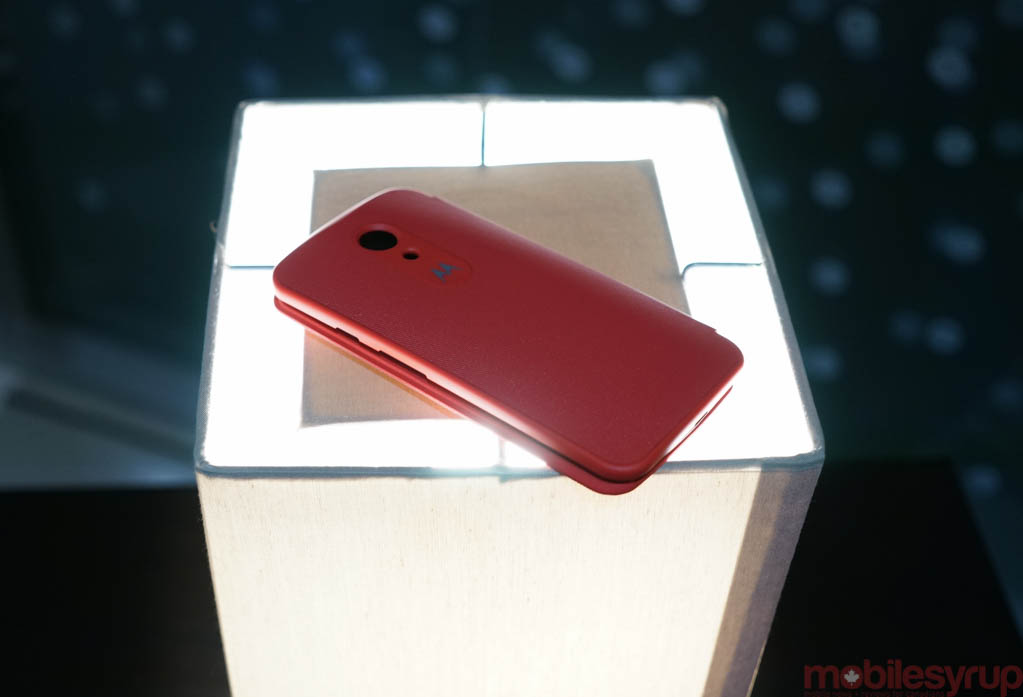
There isn’t a use case, other than the most intense games, at which the Moto G doesn’t excel. The Snapdragon 400/1GB RAM combo is proving to be both a price and performance winner, as many competitors, from HTC to Samsung to Huawei and Alcatel One Touch, seem to be following in its footsteps. The real performance test, however, will be to see whether the combination holds up on Android L, which promises OS-wide 60fps performance.
The second-generation Moto G will be available later this year, both at carriers and unlocked through retail channels. Motorola Canada has yet to set a price on the unlocked version, nor will it comment on whether an LTE variant is on its way, but we should be hearing more on both those subjects fairly soon.
MobileSyrup may earn a commission from purchases made via our links, which helps fund the journalism we provide free on our website. These links do not influence our editorial content. Support us here.

